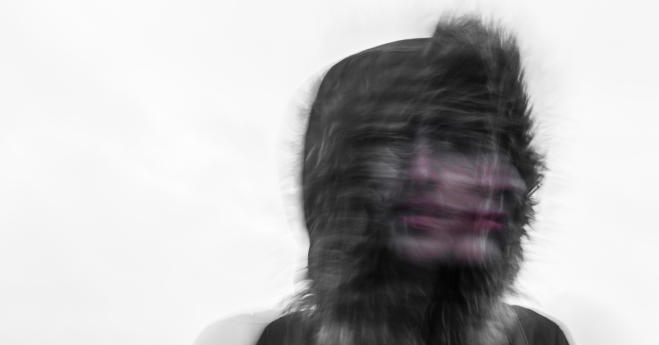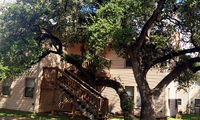Hallucinogen Drug Abuse Treatment
 Hallucinogens are a class of drug that when consumed can alter and distort an individual’s perception of reality. This type of drug causes the user to hallucinate and have thoughts and feelings about things that are not true to their surroundings. An individual under the influence of a hallucinogen can be a danger to themselves as well as others when they react to the auditory and visual hallucinations caused by the drugs. Varieties of hallucinogenic drugs can be both man-made and derived from naturally occurring plants and fungi, such as mushrooms. Over centuries, many of these hallucinogens have been used in the ceremonies and shamanistic rituals of certain religions. According to a 2017 survey by the National Institute on Drug Abuse, 15.5 percent of individuals 12 years of age and older had reported using hallucinogens at some point in their life.
Hallucinogens are a class of drug that when consumed can alter and distort an individual’s perception of reality. This type of drug causes the user to hallucinate and have thoughts and feelings about things that are not true to their surroundings. An individual under the influence of a hallucinogen can be a danger to themselves as well as others when they react to the auditory and visual hallucinations caused by the drugs. Varieties of hallucinogenic drugs can be both man-made and derived from naturally occurring plants and fungi, such as mushrooms. Over centuries, many of these hallucinogens have been used in the ceremonies and shamanistic rituals of certain religions. According to a 2017 survey by the National Institute on Drug Abuse, 15.5 percent of individuals 12 years of age and older had reported using hallucinogens at some point in their life.
Types of Hallucinogens
Hallucinogenic drugs fall into three main categories: psychedelics, dissociatives and deliriants. Although they all belong to the same class of drugs, substances under each subcategory produce different forms of hallucinogenic results in an individual by altering or hindering certain processes of brain chemistry.
Psychedelics
This type of hallucinogen triggers auditory and visual hallucinations in an individual by hindering the brain’s ability to filter out certain stimuli. In doing so, a user becomes hyper-aware of their surroundings as all stimuli is registered in the absence of the brain’s natural selection process. Under the influence of such drugs, a person may see bursts of colors, experience feelings of euphoria, hear voices that aren’t there and have visions. Psychedelic drugs include:
- LSD: Lysergic acid diethylamide, more commonly known as acid, is a recreational drug derived from an acid found in ergot fungus. LSD has been used in some religious rituals for its ability to produce outer body experiences and heightened sense of awareness in some users. Although an overdose of LSD is unlikely to led to death, “bad trips” that result in extreme anxiety and paranoia can lead to an individual putting themselves in a situation that results in accidental death. A high can last between 6 and 14 hours depending on the dose taken and how an individual's body reacts to the dose.
- Peyote: a hallucinogen popular in the religious rituals of Native Americans for centuries. It is derived from a small cactus native to Mexico and parts of Texas. Peyote, which contains the psychoactive ingredient mescaline, can produce visual and auditory hallucinations in those who consume it. Effects of this drug can last between 10 to 12 hours. Although not dangerous when consumed on its own, peyote can be dangerous if ingested by individuals who have other substance abuse or mental issues.
Dissociatives
Unlike psychedelics, which make an individual hypersensitive to surrounding stimuli, dissociatives drugs cause the user to detach or disassociate from their surroundings as well as from themselves. In doing so, this form of hallucinogen causes the user to feel like they may have no control over their actions or that they are dreaming. Some of the drugs included in this category are:
- Magic mushrooms: Also known as shrooms, magic mushrooms are naturally occurring hallucinogen derived from the psilocybin mushroom. They are commonly used for recreational purposes and can be consumed dry or brewed in to a tea. Effects last 1 to 1.5 hours depending on the dose and the individual's reaction to the drug. As with other hallucinogens, a user may experience strong mood shifts. An individual under the influence of magic mushrooms may experience a part of a having a lucid or waking dream. They may even mix their senses and taste colors or smell sounds, also known as synesthesia. Although there are no ill effects of magic mushrooms on their own, a “bad trip” can lead to an individual putting themselves and others in dangerous situations.
- Ketamine: Also known as K or special K, ketamine was originally invented to serve as a human and veterinary anesthetic. However, it found popularity among recreational users in the 1960s and is a popular drug among clubbers and ravers. The colorless and odorless drug is usually swallowed or snorted but can also be injected or mixed in with drinks. Once in the system, users experience intense relaxation, euphoria and shifting vision. In higher doses, users may experience a sensation of being outside of their body. Auditory and visual hallucinations and synesthesia are also common.
- DXM: Dextromethorphan, also known as Robo and DEX, is an ingredient in many over the counter cough suppressant syrups and pills. Usually used in private recreational settings, such as the home, DXM produces audio and visual hallucinations as well as loss of motor function. Because medications with Dextromethorphan are relatively cheap and easy to come by, DXM is popular among teenagers. Those who use it do so to achieve a feeling of being “out of it” or dissociated from their surroundings.
Deliriants
This subcategory of drugs causes the user to become delirious and experience hallucinations in which they can see things that are not there. While under the influence of these drugs, a user may carry conversations with people who don’t exist and consume things that don’t exist and see creators that aren't there.
- Datura: also known as Jimsonweed or Devil’s weed, Datura is a genus of 9 species of dusk-blooming flowering plants capable to thriving in many temperature and climate regimes all over the world. All species of Datura are poisonous. Seed pods and flowers are especially toxic. Once ingested, an individual may find it extremely difficult to differentiate between reality and hallucination. Blurred vision, tracing, and flashes of light in peripheral vision are also common.
- Deadly Nightshade: also known as belladonna, this is one of the most toxic plants around. Although all parts of the plant are toxic, berries and leaves pose the greatest danger. When ingested one can experience sever hallucinations, rapid heartbeat, paranoia, memory loss and seizures.
Hallucinogen Substance Abuse Disorder
Hallucinogens, although dangerous, do not pose the same risk for dependence compared to drugs such as opiates. It is not common for individuals to become physically dependent on many hallucinogens or to experience any withdrawal symptoms once cessation has begun. This is largely due to the fact that a user's tolerance for many hallucinogens increases each time it is used. However, hallucinogens do carry a risk for abuse and may lead to psychological dependence in some individuals. The following are some signs that an individual may be under the influence of hallucinogens:
- Dilated pupils
- Hyperthermia
- Combative behavior
- Trembling
- Confusion or disorientation
- Panic attacks
- Elevated heart rate
Dangers of Hallucinogens Substance Abuse Disorder
Although some hallucinogens, such as LSD, peyote and magic mushrooms, are not dangerous on their own, users may often may put themselves or others in dangerous situations as they react to hallucinations, make rash decisions and engage in risky behavior. Other hallucinogenic drugs, such as Ketamine, DXM, Datura and Deadly nightshade, pose greater risks to individuals due to their toxicity and potential for abuse. In addition, many of these drugs also cause users to experience flashbacks of their hallucinations, also known as hallucination persisting perception disorder, long after the drug has left their system, which in severe cases can impair an individual's ability to lead a productive life. Permanent damage to internal organs, such as the bladder, kidneys and heart, have also been reported due to the use of synthetic hallucinogens like Ketamine. Persistent psychosis, which manifests as visual disturbance, disorganized thinking, paranoia and mood swings, is another potential long-term effect of hallucinogen abuse.
Treatment for Hallucinogen Substance Abuse Disorder
Because hallucinogens are not addictive in the traditional manner and do not cause withdrawal symptoms, treatment for abuse of these drugs focuses primarily on behavior therapy. Many individuals who struggle with hallucinogen substance abuse also suffer from substance abuse control issues and/or other co-occurring issues such as depression.
Residential Treatment
There are many residential programs that can help individuals suffering with hallucinogen substance abuse disorders. At these residential facilities, individuals take advantage of round the clock access to medical and therapy staff as they focus on their recovery in a safe environment. Depending on the residential treatment programs chosen, patients can benefit from one-on-one therapy, group therapy, and recreational therapy. Many inpatient treatment centers also offer more holistic treatments, such as exercise, meditation, art classes and yoga, to supplement therapy and replace bad habits with more mindful practices.
Outpatient Treatment
For individuals who cannot afford to take time of work or have family responsibilities they must tend to daily, outpatient treatment is an option. Outpatient programs are also beneficial for individuals who have completed an inpatient program and want to continue their treatment but no longer need a structured or controlled environment for their ongoing treatment. Outpatient treatment is also a good option when cost is a limiting factor.










